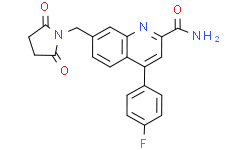
购物车0
产品总数:61421


| 商品编号 | 规格 | 价格 | 会员价 | 是否有货 | 数量 |
|---|---|---|---|---|---|
| PL07140-5mg | 5mg | ¥7232.00 | 请登录 |
|
|
| PL07140-10mg | 10mg | ¥12858.00 | 请登录 |
|
|
| PL07140-25mg | 25mg | ¥24912.00 | 请登录 |
|
|
| PL07140-50mg | 50mg | ¥37770.00 | 请登录 |
|
|
| PL07140-100mg | 100mg | 询价 | 询价 |
|
|
| PL07140-200mg | 200mg | 询价 | 询价 |
|
|
| PL07140-10mM*1mLinDMSO | 10mM*1mLinDMSO | ¥7956.00 | 请登录 |
|
 扫码关注公众号
扫码关注公众号